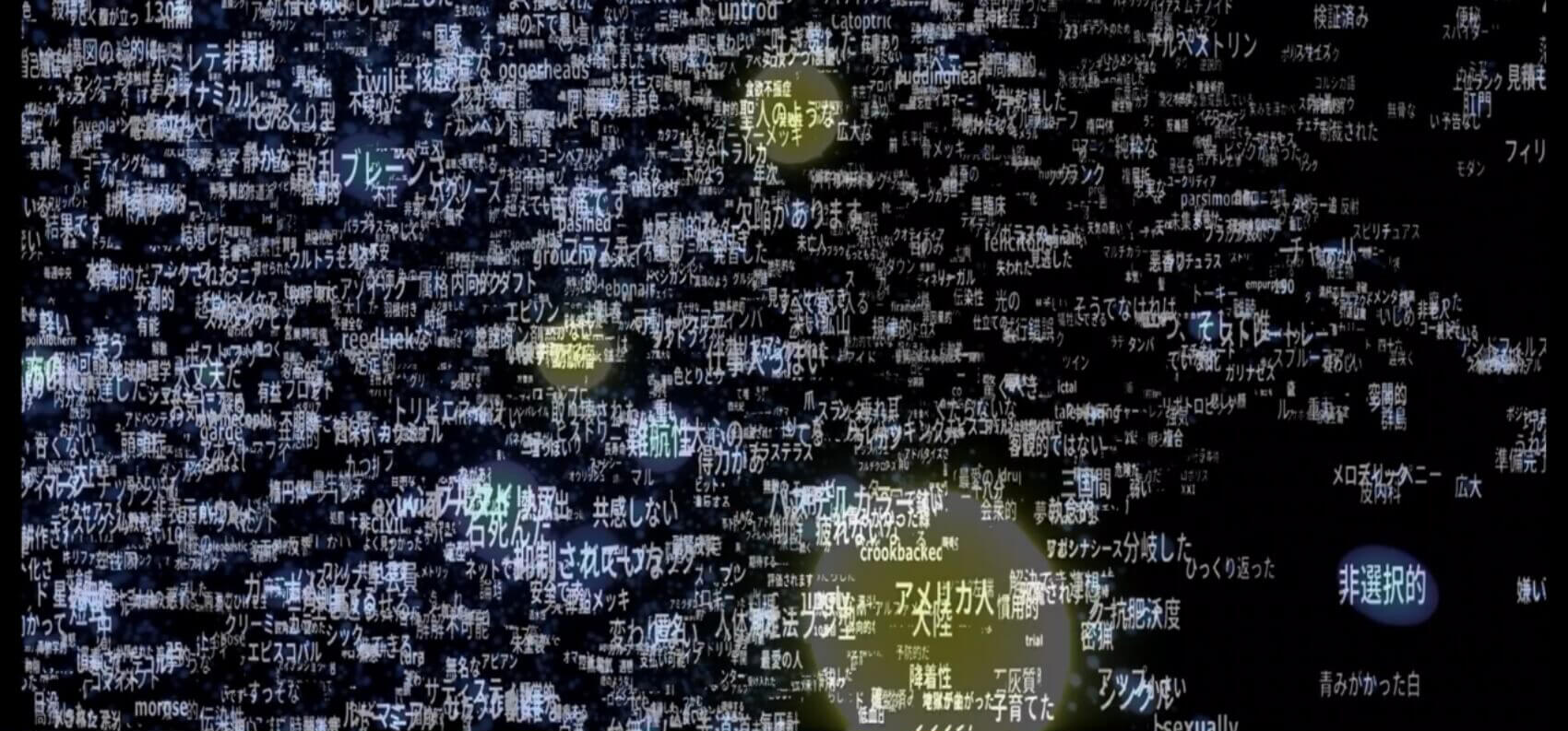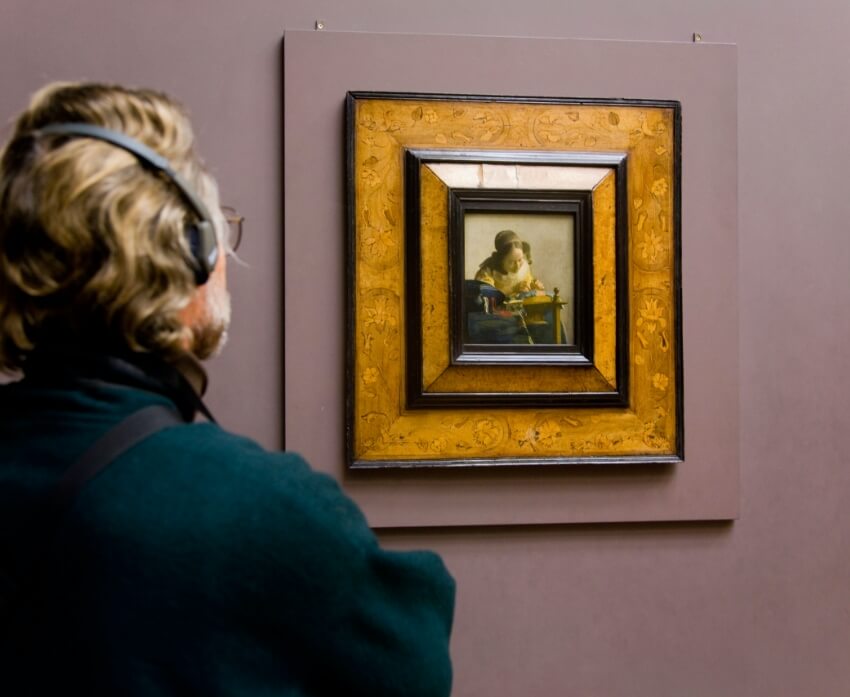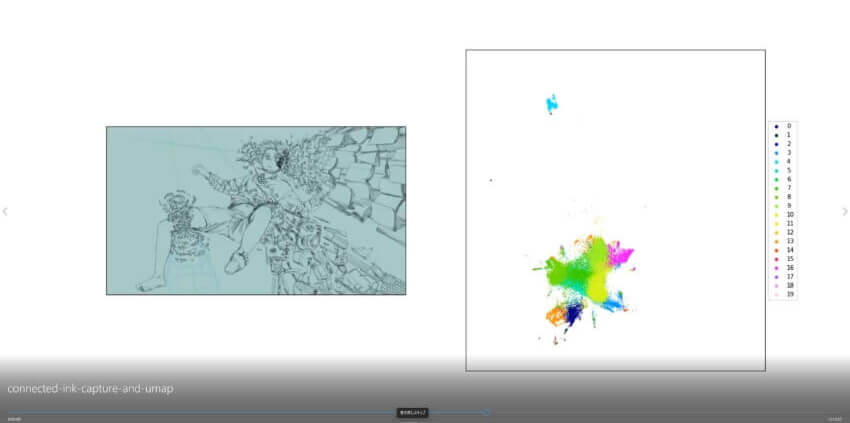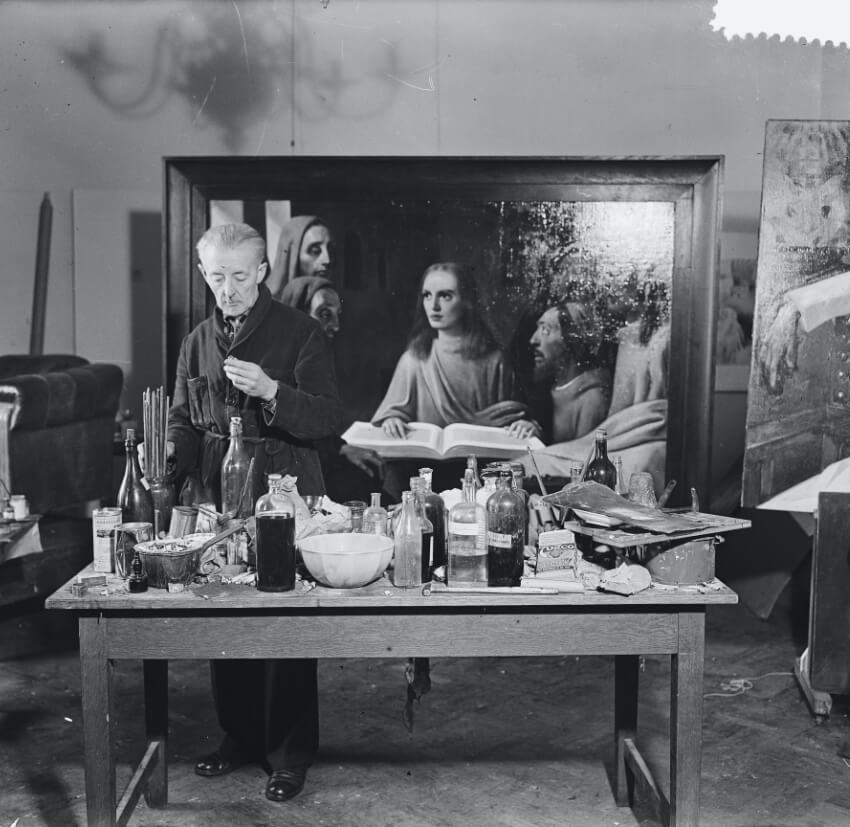The Essence is in Traces (or KISEKI)
Experimental Approach in Discovering New Values by Analyzing the Creation Process

Now, long-vanished old masters like Rembrandt, Osamu Tezuka and many others are producing new works of art - all with the help of advanced AI technology. High reproducibility based on feature analysis of existing works allows manufacturing well-made “fictional art pieces” which can hardly be told apart from their originals in how they look or feel. What is the definition of arts these days? Is it limited to finished works? When we feel touched by a piece of art, what do we see? Perhaps, is it the underlying “raw data” on the genesis of a piece of art that triggers our emotions?
Related Sessions:
KISEKI ART: ART IS ALSO FOUND IN TRACES OF CREATION – WHAT WILL COME OUT OF THE “VISUALIZATION OF TRACES”?

How Vermeer Painted his Works
"I’d rather have my left hand cut off if I could observe Vermeer of Delft for ten minutes sitting at his easel and painting" commented Salvador Dalí once on Johannes Vermeer.
Only 35 genuine known works of the artist are left in the world today. Vermeer is one of the most prominent representatives of Dutch Baroque Art. With his painting style of serene beauty and soft luminosity, he enjoys great popularity in Japan and around the world. In particular, he is known for the “Vermeer Blue”, a brilliant blue using pigment derived from lapis lazuli. It’s hard to imagine today, but he was once almost forgotten in the history of art. This is because Vermeer was not that prolific and painted mostly scenes from the daily lives of ordinary citizens at a time when paintings of extraordinary subjects were generally preferred. After his death, he gradually fell into obscurity. Only when French realism came into fashion, his works were recognized again by Gustave Courbet, Jean-François Millet and others.
The zenith of the Vermeer craze is embodied in Salvador Dalí, the flag bearer of surrealism. The words of Dalí - possibly one of the keenest advocates for “rediscovering” Vermeer - reveal his enormous interest in Vermeer’s painting method, i.e. “traces of brush strokes in the art-making process” as well as “how a painter shapes his work by experimenting” on canvas.

Recording, Sorting and Re-Interpreting of “Traces in Creation”.
Vermeer’s “The Lacemaker” in possession of the Louvre Museum served a source of inspiration for Dalí’s paranoiac-critical study of Vermeer's 'Lacemaker’. This painting is Dalí’s vision of “the universe bursting out of a girl's hands holding a needle” that he saw in the said work of Vermeer. “The universe embodying the painter's thoughts and attempts in creation” was concealed “invisible” until Dalí picked up his brush for illuminating traces in Vermeer’s act of painting. Following this line of thinking, an ambitious initiative is now being rolled out to visualize traces with digital technology and to create new values in art production: the “KISEKI ART” Project.
The project started with a question. Where to find values in works of art - only in finished works? Or are comparable values possibly also found in the art-making process? Wacom CEO Nobu Ide comments as follows: “As an ’instrument provider’, Wacom seeks to provide creators with digital tools that can be their ‘right hand’ by offering maximal drawing comfort. Then we had the idea if it was possible to capture ‘a moment of creation’ by artists. There should be more to what we can do than merely to interpret pen-input data as lines. By linking other information like time, location and context, traces in creation can be made visible. I see great potential in the process of turning these visualized traces into new inspirations for artists.”

Art’s Raw Data Recorded by High Technology
“KISEKI ART” is a joint R&D project of Wacom, Preferred Networks and CELSYS. The three players contribute to the project with their unique competence in each field.
Wacom’s technical portfolio includes WILLTM , a technology for viewing and saving digital ink data. With the use of this technology, peripheral data such as pen pressure, time, location etc. can be linked to strokes written or drawn with digital tools.
PFN, another partner, is highly regarded for its development of AI (artificial Intelligence). With their mission being to “make the real world computable”, PFN is developing applications of cutting-edge technologies using deep learning. In this project, PFN’s technology plays a key role in analyzing changes in feature quantity (data on numerical features) using AI and in the process turning them into new art expressions.
Last but not least, CELSYS is a software company that offers graphics applications such as CLIP STUDIO PAINT with versatile brushes, a natural brush feel and a wide range of functions. Its various services and apps cater to the needs of graphic contents creators around the world. The company supports the project by providing an especially customized version of CLIP STUDIO PAINT. The “KISEKI ART” project combines the technical strengths of three companies under the common goal of storing “art’s raw data = trace data”, something that until now could not be have been achieved on their own.

KISEKI Opening a Door to New Creation
Artists use digital instruments to input their strokes, traces of which are recorded, sorted and re-interpreted in this project. Traces thus captured are then converted into visual output through AI analysis. And here we go - a completely new work came out of it! We can further close the loop by channeling this new piece of art back to the original artists whereby they can discover something they have not been aware of before and given new stimuli. For sure, the latest digital technologies is a key in making this productive flow possible. On the other hand, one should not overlook the underlying philosophy - respect for the creators! The project can prove its real worth if it respects the thoughts and feels of artists inherent in every stroke and recognize their value. Traces in a piece of art are comparable to a watermark certifying its origin and history and thus can be said to be assets of the creator. Such a watermark (with embedded copyright information) is a fundamental technology for new art expressions and services given birth by their traces. All this should support the creative works of artists.
As a non-prolific painter, Vermeer was an easy prey for forgers. The world has seen numerous fake Vermeer, among which “The Supper at Emmaus” can be found. When visualizing traces, we are giving shapes to artists’ thoughts and feels. In a way, the question whether original or fake is a biased perspective of later generations. Actually, when it comes to the thoughts and feels of the creators, one cannot say that one is better than another” For van Meegeren, forgery is his way of demonstrating his talent to the world. If he were given the means to visualize traces of his art works, van Meegeren may have chosen the right path in his artistic activities. Expectations are running high for the “KISEKI ART” project which may radically change the way we appreciate art. Visualized traces in the art-making process can be a new “yardstick” in viewing finished works of art.
editor / writer_ Chikara Kawakami

